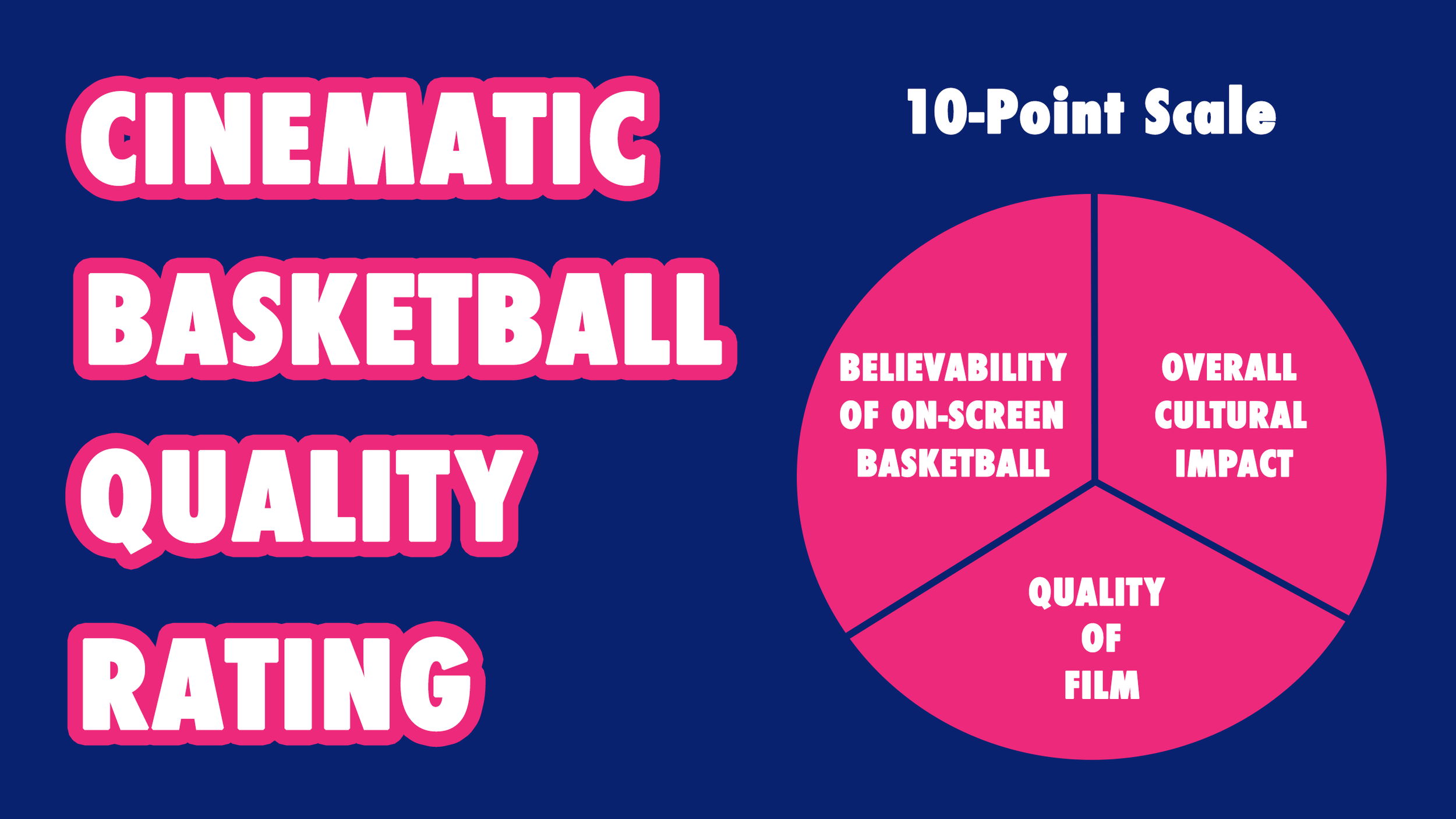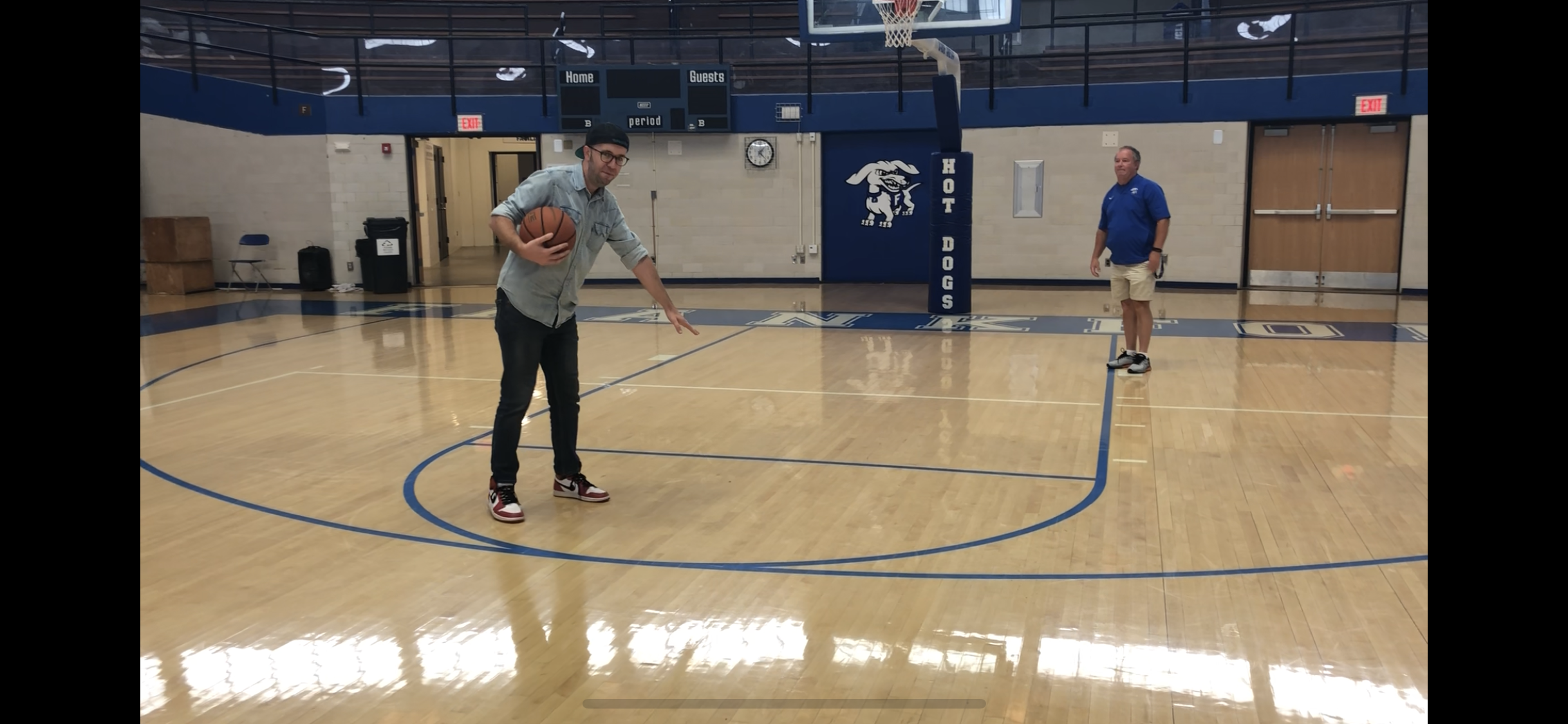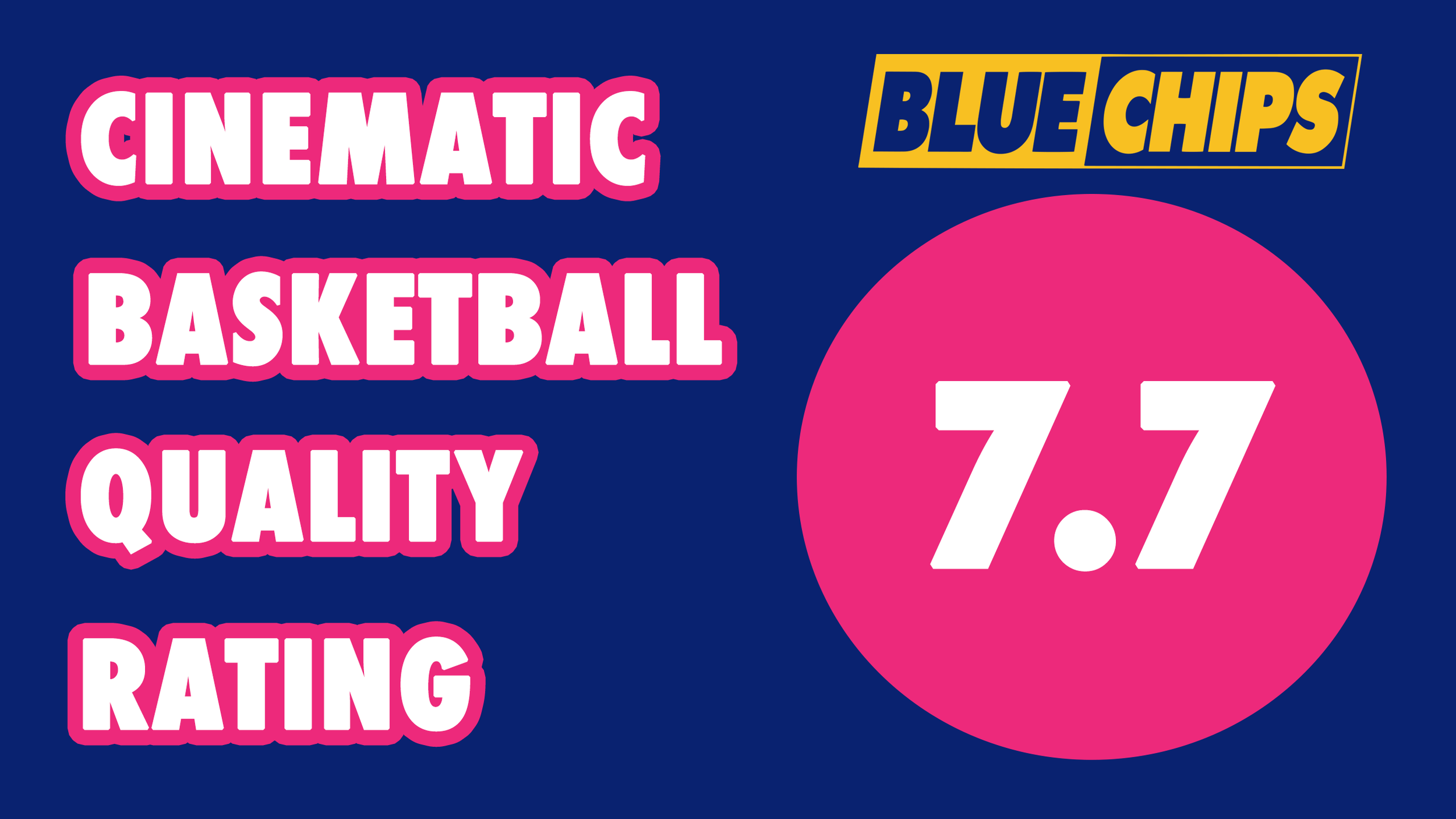The Dime Theater: Blue Chips is a Symphony of Perfection & Absurdity
On February 18th, 1994, just a few weeks before the NCAA Tournament, Paramount Pictures released a somewhat legendary movie called Blue Chips. It melded the tradition and passion for basketball in the state of Indiana, the excitement of discovering the next great players, and the sizzle of the forbidden, in the form of scandal.
The movie was written by Ron Shelton, who also wrote heavy hitters like White Men Can’t Jump, Bull Durham and Tin Cup, and it was directed by William Friedkin, who’d done a quaint little coming-of-age story called The Exorcist. It starred People Magazine’s “Sexiest Man Alive” for 1992 — the flammable and furious Nick Nolte. 1992 must’ve been a somewhat unsexy time?
Nolte plays a once-glorious coach named Pete Bell, who’s on the hot-seat after a couple of subpar seasons at “Western University.” This sudden valley has resulted in a sudden spike in pressure to right the ship, and Nolte ends up bending some of his own personal beliefs about the sport in order to get back on top.
In the “The Dime Theater,” I’m going to attempt to create a hierarchy of basketball movies through something called the Cinematic Basketball Quality Rating. It’ll measure the quality of the basketball on screen, the overall cultural impact of the film and the quality of the movie.
Let’s get started.
BELIEVABILITY OF BASKETBALL – 32 out of 33
You’ve got two choices, when you’re making a sports movie.
Option A: You hire great actors who can add gravity to the non-sports scenes and do some camera trickery to cover it up. We’ve seen this move many times.
Option B: You cast real players who can give the athletic scenes actual credibility and just hope that their acting is passable enough to keep the movie from outright sucking.
Ron Shelton is on record as being a big believer in the latter. Occasionally you can find actors that check both boxes, but they’re rare. Former athletes like David Duchovny, Kevin Costner, etc. are harder to find.
Basketball is a difficult game to fake. There’s an implied, instinctive choreography, and non-hoopers can be very easy to spot. The basketball scenes in Blue Chips were filmed in an enormous high school gym called Case Arena, which is in Frankfort, Indiana. The place seats just over 5,000 people, and guess what: your boy went there to see it for himself. Case Arena is absolutely gorgeous in person. Obviously I got some shots up. (LOOK, I HAD ON A BUTTON UP AND JEANS. BACK OFF.)
Blue Chips really excels in this area, and there’s a simple reason explanation for that.
There are real college basketball players filling out the basketball scenes in this movie, and it shows. Guys like Bobby Hurley. Calbert Cheaney. Current Purdue coach Matt Painter. Rick Fox and George Lynch. Allan Houston. These real players were being coached by actual division one basketball coaches. Guys like George Raveling, Bobby Knight, and Rick Pitino. These were organized games with highly experienced players, and everyone was told to actually try and win. The games would be edited to show the desired outcome, but the basketball looks real because it is real. No movie has ever done that.
Bobby Knight famously took the games seriously enough that he intentionally sabotaged the last play of the movie. The play call was intended to be a sideline out of bounds. With about 12 seconds left, the inbounder was supposed to cut to the right low block, and displace Shaq to the high post. Shaq was then supposed to get a backscreen, spin off of it and dive hard towards the rim to receive a lob from Penny Hardaway. Huge dunk. Huge applause. Western University upsets an alternate universe version of Indiana and suddenly Pete Bell is back on top… for a few minutes.
Knight, in typical Knight fashion, forced them to do the scene twice, which apparently really enraged an already excitable William Friedkin. In the huddle, Knight told his players to disrupt Shaq’s path to catch that “game-winning” lob. If you want to talk about believable basketball, Bob Knight choosing to be an asshole so that he could prove that he’s not a pushover is about as authentic as it gets. Knight, Friedkin and Nolte all on the same set is just, incredible to think about. The stories that must’ve come out of that shoot.
Rick Pitino was on the verge of becoming a full-blown coaching superstar by this point, after dragging the Kentucky program back from probation and into the 1993 Final Four. Growing up in Kentucky, I can just tell you: Rick was a god, when this movie was being made. You can tell that Rick is really feeling himself, and it becomes self parody, but a lot of the terminology he used in those huddles was consistent with his actual philosophy. Even the throwaway lingo in the huddle about which players to trap was accurate. The irony here of course being that Rick was eventually fired for an enormous scandal at Louisville, eventually causing their national championship banner to come down.
Nolte is one of the best on-screen basketball coaches we’ve had. It’s well-known now that he spent a ton of time with Bobby Knight during the 1992 season, and if anyone was going to capably impersonate Bobby Knight, it’s Nick Nolte. His speeches were pitch-perfect to things that Knight would’ve done. Another neat detail is that you can see that Pete Newell is actually sitting on the bench next to Nolte during the games, where he supposedly told Nolte when to go yell at an official, or what to say to this or that player. This all contributed to the realism of those scenes.
In terms of the sounds in a game environment, I’m always amused by the use of foley sound in this movie, specifically when the players are finishing at the rim. If a guy softly lays the ball in, you aren’t going to get a dramatic swish sound. Also, the screams were a little over the top at times. It all adds to the style of the movie, but it’s still funny.
The basketball scenes in Blue Chips were handled brilliantly, and in that sense the movie is more or less unrivaled. It has yet to be topped.
OVERALL CULTURAL IMPACT – 21 out of 33
Even though it fell short of being an all-out cultural phenomenon, within the basketball world, Blue Chips is still an iconic film. You can still buy a Butch McCrae or Neon Boudeaux jersey. Action Bronson actually made a mixtape called “Blue Chips.”
Blue Chips actually had an enormous causal impact on the NBA. The filming of this movie took place in the summer of 1993, which was after Shaq’s rookie season in the NBA. He was already a gigantic star by this point, to the point that the poster for the movie actually featured him as the co-lead of the film. The blurb on Shaq’s IMDB page should just be a gif of someone sighing.
Here’s something wild to think about: if Chris Webber hadn’t called the timeout during that infamous national championship game between Michigan and North Carolina, he might’ve been in Blue Chips, and it’s possible that we never would’ve gotten to see the Shaq/Penny era.
Webber was the biggest college basketball star at the time, having just been a part of the Fab Five, and the filmmakers apparently really wanted him to be involved. Think of all the things that happened because Penny and Shaq became friends on the set of that movie: the Warriors don’t trade those picks to Magic, which then got sent all over the place and turned into multiple high-quality players (one of which was Vince Carter, who is still playing today). We got the series between Chicago and Orlando in 1995 that ultimately caused one of the great I’m-effing-pissed seasons of all-time from MJ in 1996.
To that point, Webber and Shaq were apparently in constant communication, and that communication stopped when Shaq ran with Anfernee Hardaway in some of the infamous Blue Chips pickup games. Hardaway wanted to play with Shaq, and went out of his way to ingratiate himself to the Diesel. Few movies affect reality like that.
QUALITY OF FILM – 20 out of 33
Ron Shelton is considered by many to be the best cinematic sports writer of all time, and his realism and approach to cultural issues are a big reason why. His characters don’t live in cringey, trope-filled heroic arcs of redemption. They face unceremonious ups and downs, and he really seems to enjoy writing about the role that sports can play in the plight of a desperate person. Funny that, even in this movie, where his team has a joyous moment, the main character can’t stomach the ethical dilemma he’s faced with, and he invalidates the glory that he feels is tarnished and undeserved.
It does seem to beg the question: would this movie have been better without the cameos and the star players? These cameos were a big part of the marketing of the movie. They’re constant, and the acting is pretty decisively bad. Dick Vitale’s big Hollywood moment goes on for way too long and wouldn’t be there if he weren’t such a celebrity in the college game, the scenes with the competing coaches are amusing (mainly because of Nolte) but amazingly terrible—also, why were they all going to the same game to meet Butch McRae? My favorite is Larry Bird, who immediately waves and smiles ear-to-ear when he hears a voice on his property, before he even has a moment to realize who it is. Hilarious.
Bob Cousy plays the athletic director, and although his physical acting is actually decent, any time he spoke it was painfully wooden. Of the players, Matt Norver did fine, Shaq was stiff but charming enough to get by, and Penny had the emotional range of a snow shovel. Tony’s acting was so stiff in the dorm room scene apparently that William Friedkin literally slapped him in the face. It’s all fine. We got through it… but it does stick out, and to the non-sports fan, the charm of the ‘hey, it’s that guy!’ isn’t there — it’s just terrible acting.
There are two voices at war in Blue Chips. The first voice is the one contending that college basketball is a virtuous pursuit at its core, and that the presence of money has corrupted that. It’s an interesting idea, the assertion that doing things for free and purely for the love of them is on a higher moral footing than doing things for money. It implies that experiences driven by money are less authentic and in some way fraudulent?
Pete Bell is a coach that comes from a world where hard work is rewarded with success, success is rewarded with prestige, and prestige is rewarded with preference when it comes to the best and brightest. Money screws all of that up, in Pete Bell’s mind.
The other voice is the voice of JT Walsh’s (RIP) character, who’s a visible, vocal alumnus and booster for the program. He explicitly addresses the absurdity of Bell’s hypocrisy, pointing out that the players bring in millions of dollars to the school, and that he, the coach, benefits directly from that in a variety of ways. The scenes between Walsh and Nolte are by far the most well-performed, and those bits of exposition communicate the entire dilemma of the movie. There’s very little subtlety between them, but it’s hard to look away from the explosiveness of their chemistry.
Really it’s miraculous that anyone is surprised that we’re in this situation, as fans and supporters of college basketball. A hugely valuable workforce starts standing up for their value when they see that their employers desperately need them to succeed and are living lavish lifestyles built on double standards? You’d have to be living in a moral utopia for that to continue to happen.
This is me arguing with Coach Bell’s character, but in a way, it makes you think that for someone so successful and tenured, he’s a bit naïve. High major sports were never truly “pure,” and the idea that you can’t have a pure, fulfilling experience of development and personal growth while also seeking compensation is just ludicrous. You can. I’ve had jobs where I’ve made lifelong friends, and I never would’ve met those people if I hadn’t been pursuing money.
If the status quo had remained the same since the dawn of the sport, I could see where Pete Bell was coming from, but it hasn’t. The moment that TV and shoe money started to pour into the sport, the game changed, but the rules didn’t. We’re talking about archaic rules that address a status quo that no longer exists. A “free education” seems like a slap upside the back of the head when you think about the fact that coaches like Pete Bell need these blue chip prospects to keep their jobs. Also Pete Bell is disgusted by the money, but he goes to a shoe guy to find players? I’m sure Ron Shelton knew what what he was doing when he wrote it that way. It paints a fairly accurate portrait of what the sport is like — navigating the most tolerable unsavory elements to preserve the savory ones, hoping that you come out with a clear conscience on the other side. This ultimately proved to be too much of a challenge for Coach Bell.
This is certainly a watchable movie. I should know, I’d seen it dozens of times before this series was even a glimmer in my eye. But in a vacuum, removing all of the joy of seeing familiar faces and fantasizing about this fictional college basketball universe, is it really a quality film? The highest praise I can muster is “good, not great.” Highly memorable, but not highly impactful. Funny, but not hilarious.
I love the lore around this movie. You might say I’m even quasi-obsessed with it. But even I can admit that it’s unlikely to crack any American Film Institute lists any time in the future.
It’s imperfect, but Blue Chips is among the the best basketball movies ever made. I don’t think that I’d put it on top, but the realism of the play on-court, the good-not-great performances from the cast and the lasting cultural impact within the basketball world lead me to give it a score of 7.7 out of 10.
Let me know if you agree.
AND GET TONY SOME PROPHYLACTICS!
Twitter: @jkylemann
YouTube: The Dime Drop
Email: dimedrop.mailbag@gmail.com




